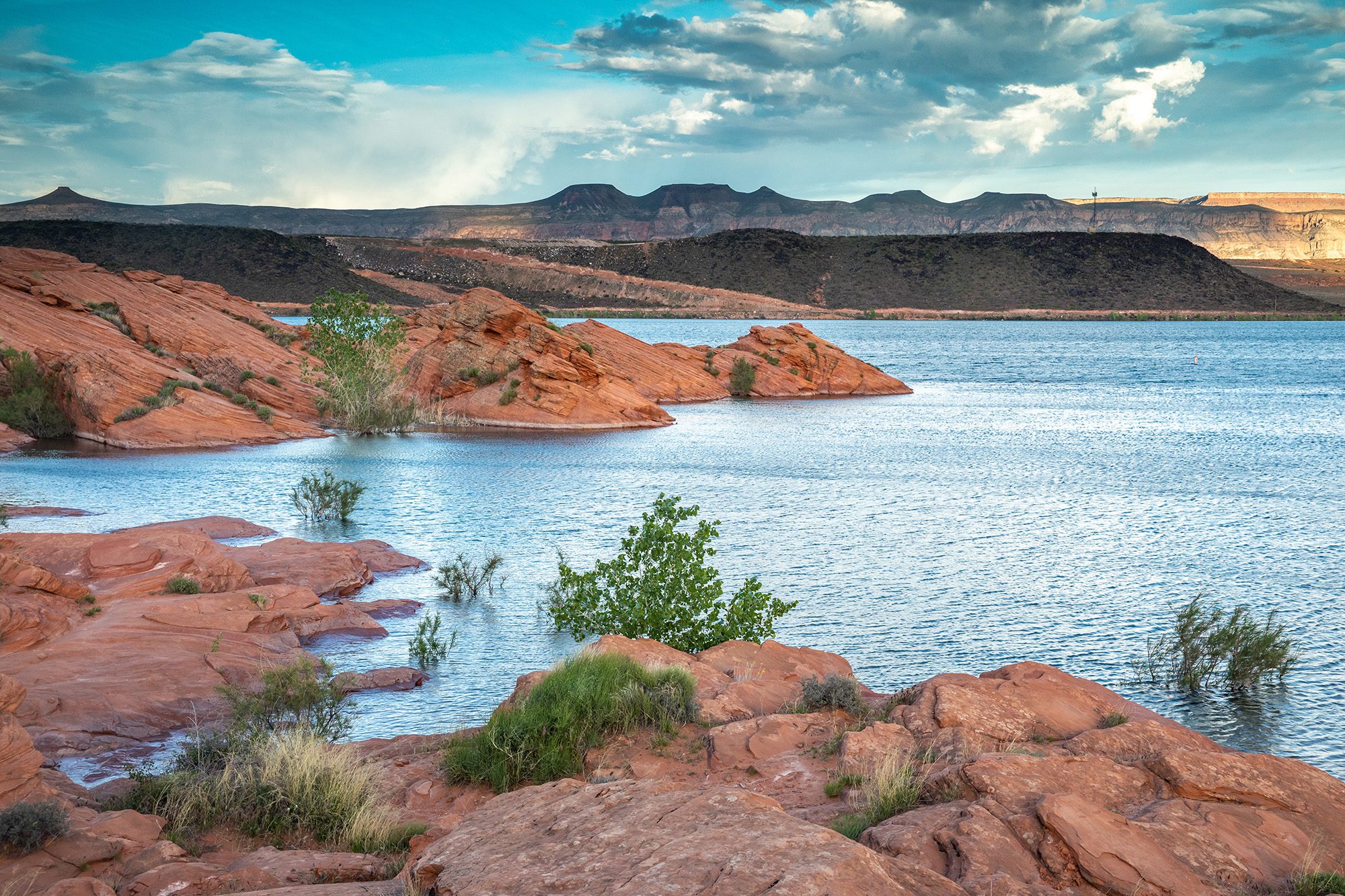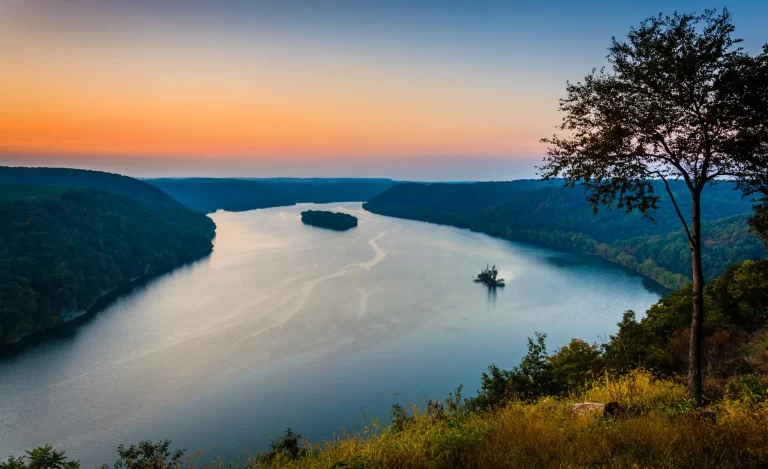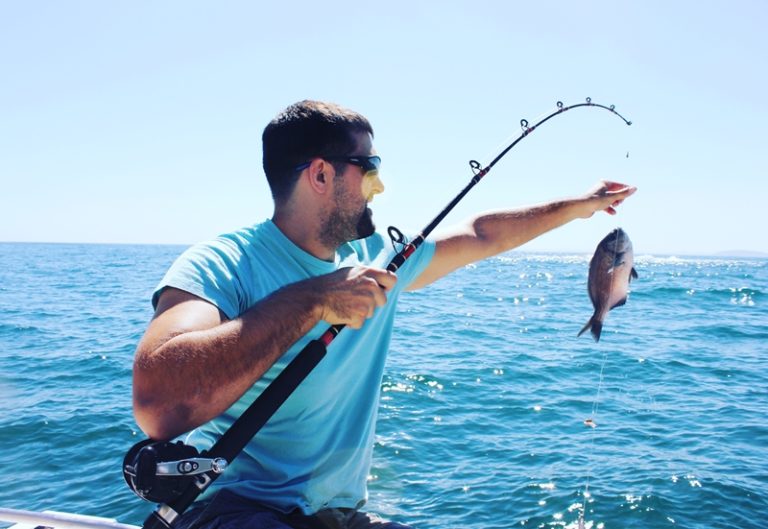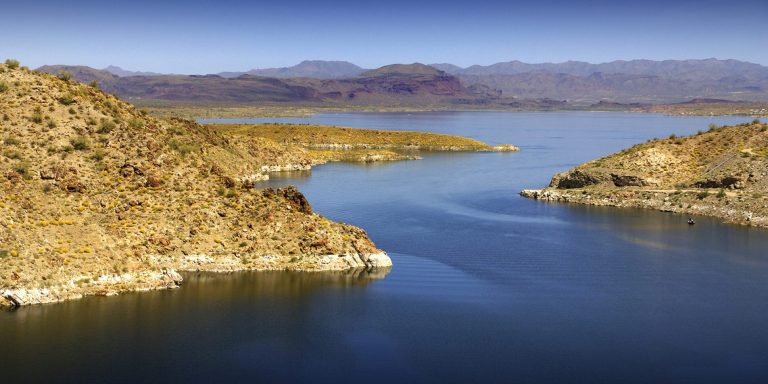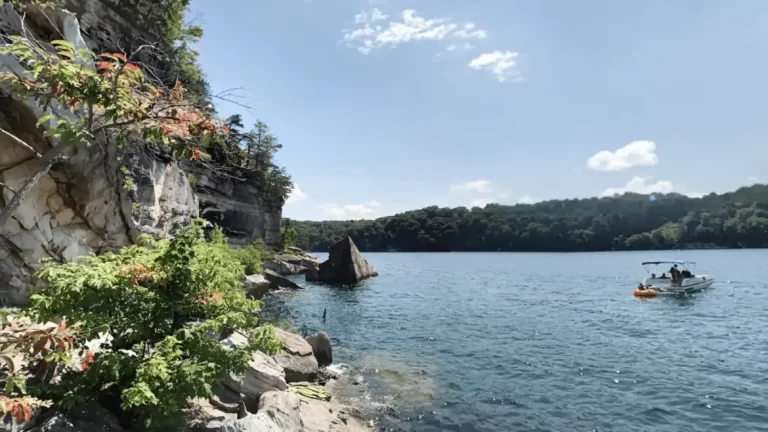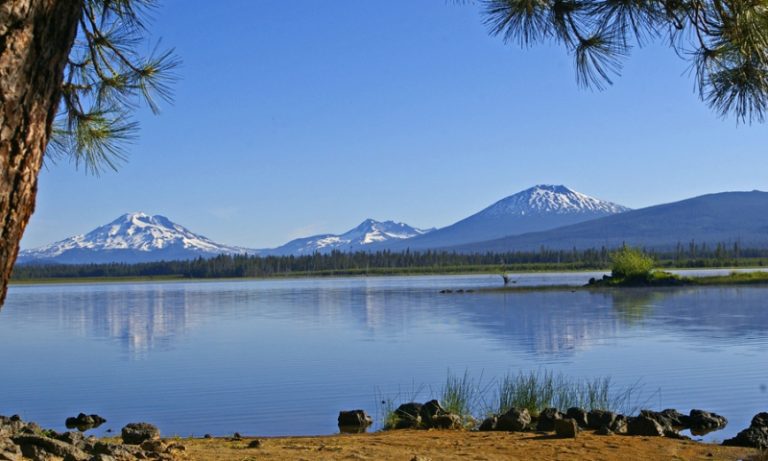Lake Lanier stands as one of the premier bass fishing destinations in the Southeast, boasting over 38,000 acres of water and approximately 600 miles of shoreline. Known for its exceptional spotted bass fishery and impressive striped bass population, this North Georgia reservoir offers anglers diverse fishing opportunities year-round. Whether you’re targeting Lake Lanier’s renowned spotted bass, hefty largemouth, or trophy stripers, knowing the most productive locations and techniques can dramatically improve your success on the water.
Bass Species in Lake Lanier
Lake Lanier hosts three primary bass species, each with distinct habitat preferences and behavior patterns:
Spotted Bass: Lake Lanier is widely recognized as “one of the best spotted bass fisheries in the Southeast,” with numerous anglers breaking personal records during tournaments. These aggressive fighters prefer the lake’s deeper, clearer waters, particularly in the southern portions with rocky structure.
Largemouth Bass: These popular gamefish are typically found in the upper river arms and feeder coves, particularly where submerged timber and vegetation provide cover. During spring pre-spawn, largemouth begin staging in preparation for bedding, which occurs when water temperatures reach 56-58 degrees.
Striped Bass: Lake Lanier holds impressive striped bass, with the lake record weighing an astounding 47 pounds. Stripers move seasonally throughout the lake, with April being particularly productive as they migrate up both rivers to spawn before working their way back down to the main lake.
Top Bass Fishing Locations on Lake Lanier
1. Vanns Tavern
This well-established fishing hotspot consistently produces quality largemouth bass. The area features abundant cover and structure that bass relate to throughout the year. The mix of shallow and deeper water in close proximity makes this location particularly versatile across seasons.
2. Browns Bridge
Known specifically for its exceptional spotted bass fishing, Browns Bridge offers deep, clear waters with rocky terrain that spotted bass prefer. This area becomes especially productive during summer months when bass migrate to deeper water, making it a go-to location for serious spotted bass anglers.
3. Flat Creek
While primarily known for striped bass, Flat Creek also holds significant populations of spotted and largemouth bass. The creek’s deep waters and abundant baitfish make it an excellent location, particularly during cooler periods when structure is key for finding concentrations of fish.
4. Six Mile Creek
Six Mile Creek stands out for sight fishing due to its clear waters and significant submerged timber, creating perfect habitat for largemouth bass. This area’s underwater structure provides ideal ambush points for predatory bass throughout the year.
5. Chattahoochee River Arm
This productive area hosts multiple bass species, including largemouth bass. The flowing water and varied structure create different fishing opportunities throughout the seasons, particularly in spring when bass move upstream to spawn.
6. Buford Dam
Located at the southern end of Lake Lanier, Buford Dam area produces excellent striped bass fishing. The cooler water discharged from the dam creates an inviting environment for fish, especially during warmer months. West Bank Park near the dam features cooler waters ideal for bass.
7. Shoal Creek
Beyond its reputation for crappie and catfish, Shoal Creek holds bass that relate to docks and natural structure. The area around the docks tends to be especially productive during spawning seasons.
8. Flowery Branch
This deeper section of the lake is a prime striped bass location during summer months. Flowery Branch has the depth and baitfish population that larger predatory bass need to thrive in warmer water.
Seasonal Bass Fishing Patterns on Lake Lanier
Understanding seasonal patterns is crucial for consistent success on Lake Lanier. The lake’s bass population behaves differently throughout the year:
Spring (March-May)
Spring represents prime time for bass fishing as fish prepare to spawn. According to local tournament results, even in early spring, anglers have recorded impressive catches with “10 bags with over 20 pounds of largemouth and Spots weighed in” during recent competitions.
Largemouth bass typically spawn when water temperatures reach 56-58 degrees, while spotted bass spawn slightly later at around 62 degrees. Fish typically spawn in waves rather than all at once, meaning you’ll find bass in various spawning stages over 30-45 days depending on conditions.
Spring Fishing Techniques: Target secondary points and rocky areas with DT6 or DT10 crankbaits in red craw pattern. Shakey heads and Neko rigs work well on secondary rocky points and boat docks.
Summer (June-August)
Summer heat pushes bass deeper, particularly in the lake’s southern section. During this period, spotted bass often hold in deeper water while some largemouth may remain shallow in areas with adequate cover.
Summer Fishing Techniques: Focus on deeper structure using electronics to locate suspended fish. The Damiki rig has proven effective for both suspended bass and those holding tight to the bottom in deeper water.
Fall (September-November)
As temperatures cool, bass return to shallower waters and become more active. This transition period often sees bass feeding heavily in preparation for winter.
Fall Fishing Techniques: Topwater fishing becomes more productive as fish return to surface areas. Spinnerbaits work well in wind-blown areas or stained water in the backs of creeks.
Winter (December-February)
Though challenging, winter offers opportunities for quality bass. Recent winter fishing reports indicate that “bass fishing on Lake Lanier is good” even with temperature fluctuations.
Winter Fishing Techniques: For deep fish, a 3/8 oz No See Em Spot Choker with a Keitech paddle tail works well in the backs of ditches and for suspended bass. In the same areas, a shakey head with green pumpkin or watermelon red Senko worm around deeper docks produces fish.
Fishing Techniques and Bait Selection
Effective Artificial Lures
| Lure Type | Best Season | Target Bass Species | Recommended Colors |
|---|---|---|---|
| Crankbaits (DT6, DT10, RkCrawler 55) | Spring/Fall | Largemouth/Spotted | Red craw pattern |
| Shakey Head/Neko Rig | Year-round | All species | Green pumpkin, watermelon red |
| No See Em Spot Choker w/Keitech | Winter/Spring | Spotted/Suspended | Electric Shad, Blueback |
| Spinnerbait | Windy conditions | Largemouth | White with chrome/gold willow leaf blades |
| Shad Rap/RK Crawler | Winter/Spring | All species | Crawdad pattern |
| Topwater baits | Summer/Fall | All species | Varies by conditions |
Live Bait Options
Live bait remains consistently effective on Lake Lanier, particularly for striped bass:
- Shad: Excellent for stripers and spotted bass
- Herring: Particularly effective for larger bass
- Minnows: Work well for all species, especially when fish are less active
Fishing License and Regulations
Before heading to Lake Lanier, be sure you have the proper licensing:
- All anglers aged 16 and over need a valid Georgia fishing license
- Licenses can be purchased:
- Online through Georgia DNR
- By phone at 800-366-2661
- At retailers like Walmart, state parks, or bait and tackle shops
A standard Georgia fishing license costs $15 annually for residents, while non-residents pay significantly more. For the most current pricing and options including short-term licenses, check the US Fishing Licenses Georgia page.
Be aware of specific regulations for Lake Lanier, including size and bag limits. The Georgia DNR maintains current information on fishing regulations.
Conservation and Sustainable Fishing
Lake Lanier’s bass population benefits from catch-and-release practices, particularly for larger breeding-size fish. Tournament results from historical events show that a significant percentage of tournament-caught bass can be successfully released – in one documented tournament, nearly 44% of bass (980 fish weighing approximately 1,951 pounds) were returned live to the reservoir.
Despite concerns about tournament impact, studies indicate that a typical bass tournament’s harvest represents a small fraction of the lake’s total bass population. One analysis found that a tournament harvest of 0.12 pounds per acre was “probably a small part of the total bass standing crop in Lake Lanier”.
Equipment Recommendations
For successful bass fishing on Lake Lanier, consider this equipment setup:
- For spotted and largemouth bass: Medium-action spinning or baitcasting rod with 12-pound test line
- For striped bass: Heavier setup with 15-20 pound test line to handle larger fish
- Electronics: Quality fish finder with side/down imaging technology to locate structure and suspended fish
Planning Your Lake Lanier Bass Fishing Trip
Lake Lanier’s accessibility from Atlanta makes it an ideal destination for both day trips and extended fishing vacations. Several marinas around the lake offer boat rentals, and numerous boat ramps provide access for personal watercraft.
For those unfamiliar with the lake, hiring a local guide can dramatically shorten the learning curve. Experienced guides understand seasonal patterns and can quickly put you on productive fishing spots based on current conditions.
Conclusion
Lake Lanier’s reputation as one of Georgia’s premier bass fisheries is well-deserved, offering anglers opportunities to target multiple bass species throughout the year. By understanding the lake’s unique structure, seasonal patterns, and proven techniques, you can experience some of the best bass fishing the Southeast has to offer.
Whether you’re targeting Lake Lanier’s famous spotted bass, searching for a trophy largemouth, or hoping to battle a massive striper, the lake’s 38,000 acres provide endless opportunities for memorable fishing adventures.
Before your trip, be sure to check current lake conditions and fishing reports, as water levels, clarity, and temperature can significantly impact fishing success. With the right preparation and knowledge, your next Lake Lanier bass fishing adventure awaits!



